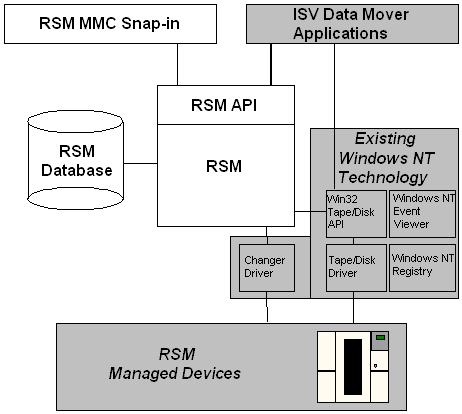
| Platform SDK: Removable Storage Manager |
RSM is a service included with Microsoft® Windows 2000® and Microsoft® Windows® 2000 that facilitates communication among applications, robotic changers, and media libraries. It enables multiple applications to share local robotic media libraries and tape or disk drives, and manage removable media within a single-server system. A group of libraries, drives, and media that are managed by RSM is called an RSM system. RSM can help you create an application that makes effective use of the media resources in an RSM system.
RSM includes the following components:
The following figure illustrates the relationships among the components of RSM, devices, and Windows 2000. RSM components are shown in solid white.

When an application needs to mount a tape, for example, it uses the MountNtmsMedia function to issue a mount request for the specified tape. RSM reads the database for location and identification information of the tape. If the tape is offline, RSM generates an operator request to insert it. If the tape is online, RSM uses the changer driver to mount it and updates the database. When the tape is in the drive RSM uses the tape driver to read the label on the tape. RSM then compares what was read from the database to what was expected to ensure the correct tape was mounted.